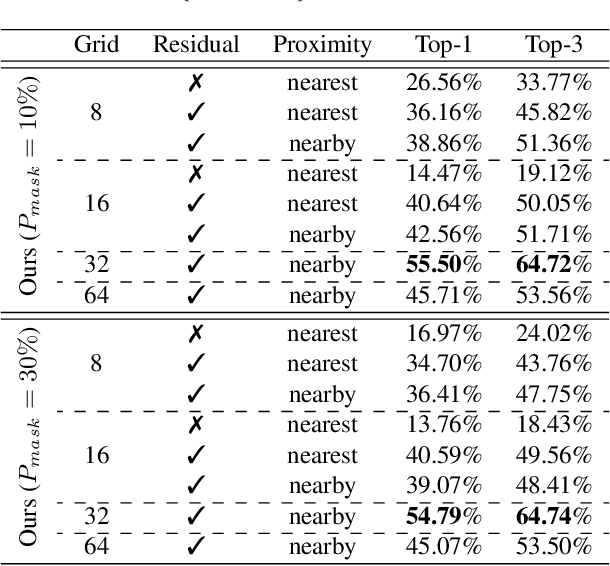Mingkang Li
Multi-representations Space Separation based Graph-level Anomaly-aware Detection
Jul 22, 2023Abstract:Graph structure patterns are widely used to model different area data recently. How to detect anomalous graph information on these graph data has become a popular research problem. The objective of this research is centered on the particular issue that how to detect abnormal graphs within a graph set. The previous works have observed that abnormal graphs mainly show node-level and graph-level anomalies, but these methods equally treat two anomaly forms above in the evaluation of abnormal graphs, which is contrary to the fact that different types of abnormal graph data have different degrees in terms of node-level and graph-level anomalies. Furthermore, abnormal graphs that have subtle differences from normal graphs are easily escaped detection by the existing methods. Thus, we propose a multi-representations space separation based graph-level anomaly-aware detection framework in this paper. To consider the different importance of node-level and graph-level anomalies, we design an anomaly-aware module to learn the specific weight between them in the abnormal graph evaluation process. In addition, we learn strictly separate normal and abnormal graph representation spaces by four types of weighted graph representations against each other including anchor normal graphs, anchor abnormal graphs, training normal graphs, and training abnormal graphs. Based on the distance error between the graph representations of the test graph and both normal and abnormal graph representation spaces, we can accurately determine whether the test graph is anomalous. Our approach has been extensively evaluated against baseline methods using ten public graph datasets, and the results demonstrate its effectiveness.
* 11 pages, 12 figures
Zero-Shot Everything Sketch-Based Image Retrieval, and in Explainable Style
Mar 25, 2023



Abstract:This paper studies the problem of zero-short sketch-based image retrieval (ZS-SBIR), however with two significant differentiators to prior art (i) we tackle all variants (inter-category, intra-category, and cross datasets) of ZS-SBIR with just one network (``everything''), and (ii) we would really like to understand how this sketch-photo matching operates (``explainable''). Our key innovation lies with the realization that such a cross-modal matching problem could be reduced to comparisons of groups of key local patches -- akin to the seasoned ``bag-of-words'' paradigm. Just with this change, we are able to achieve both of the aforementioned goals, with the added benefit of no longer requiring external semantic knowledge. Technically, ours is a transformer-based cross-modal network, with three novel components (i) a self-attention module with a learnable tokenizer to produce visual tokens that correspond to the most informative local regions, (ii) a cross-attention module to compute local correspondences between the visual tokens across two modalities, and finally (iii) a kernel-based relation network to assemble local putative matches and produce an overall similarity metric for a sketch-photo pair. Experiments show ours indeed delivers superior performances across all ZS-SBIR settings. The all important explainable goal is elegantly achieved by visualizing cross-modal token correspondences, and for the first time, via sketch to photo synthesis by universal replacement of all matched photo patches. Code and model are available at \url{https://github.com/buptLinfy/ZSE-SBIR}.
SketchLattice: Latticed Representation for Sketch Manipulation
Aug 26, 2021



Abstract:The key challenge in designing a sketch representation lies with handling the abstract and iconic nature of sketches. Existing work predominantly utilizes either, (i) a pixelative format that treats sketches as natural images employing off-the-shelf CNN-based networks, or (ii) an elaborately designed vector format that leverages the structural information of drawing orders using sequential RNN-based methods. While the pixelative format lacks intuitive exploitation of structural cues, sketches in vector format are absent in most cases limiting their practical usage. Hence, in this paper, we propose a lattice structured sketch representation that not only removes the bottleneck of requiring vector data but also preserves the structural cues that vector data provides. Essentially, sketch lattice is a set of points sampled from the pixelative format of the sketch using a lattice graph. We show that our lattice structure is particularly amenable to structural changes that largely benefits sketch abstraction modeling for generation tasks. Our lattice representation could be effectively encoded using a graph model, that uses significantly fewer model parameters (13.5 times lesser) than existing state-of-the-art. Extensive experiments demonstrate the effectiveness of sketch lattice for sketch manipulation, including sketch healing and image-to-sketch synthesis.
 Add to Chrome
Add to Chrome Add to Firefox
Add to Firefox Add to Edge
Add to Edge